Tsoureki- Sweet Greek Easter Bread
Tsoureki, the traditional Greek Easter bread is soft, tender, lightly sweet and so aromatic. What sets it apart are the spices and aromatics.
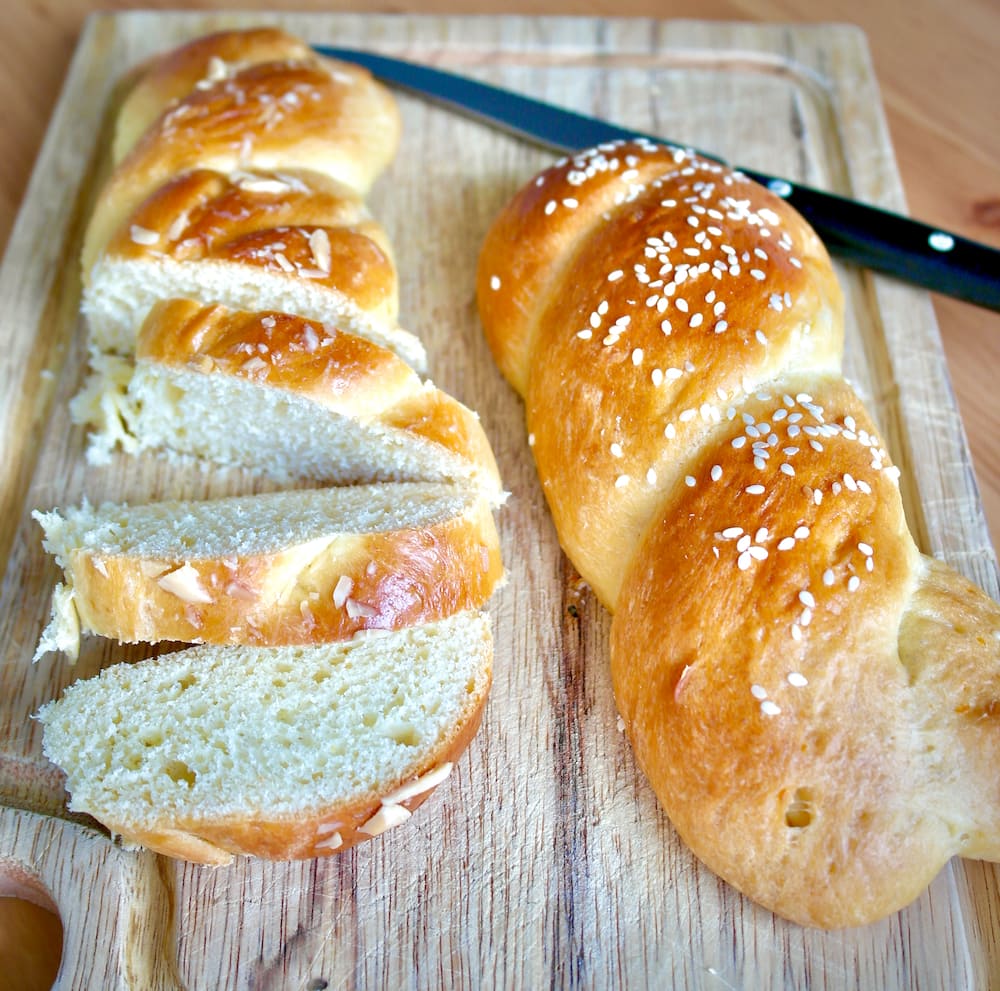
Ahh the tsoureki! This is a sweet bread made traditionally for Easter (but really you can have it as a treat year-round). It is soft, tender, lightly sweet and so aromatic! It is made with eggs, milk and butter plus the secret aromatic ingredients. These ingredients are celebratory ingredients to be enjoyed after the 40-day period of fasting where animal products were avoided.
One can say it has some similarities with brioche and challah, but what sets it apart are the 2 spices and aromatics added to it: namely mastiha and mahleb as well as orange zest. These give it the unique Greek taste that is tsoureki! I provide some links below to find these spices.
Super Easy Tsoureki Recipe
Tsoureki can be intimidating. The yeast, the kneading, the shape. I have tried and tested many tsoureki recipes. This one is by far one of the most reliable and foolproof recipes. It is straightforward and delicious. For ease the dough is kneaded with a dough hook on my mixer and the key here is the multiple risings of the dough. I can’t explain the joy I get when I see the dough rise! The texture is light, fluffy and “stringy”. I preferred to make small simple ones twisted into braids, rather than the large ones.
What is Mastiha and Mahleb
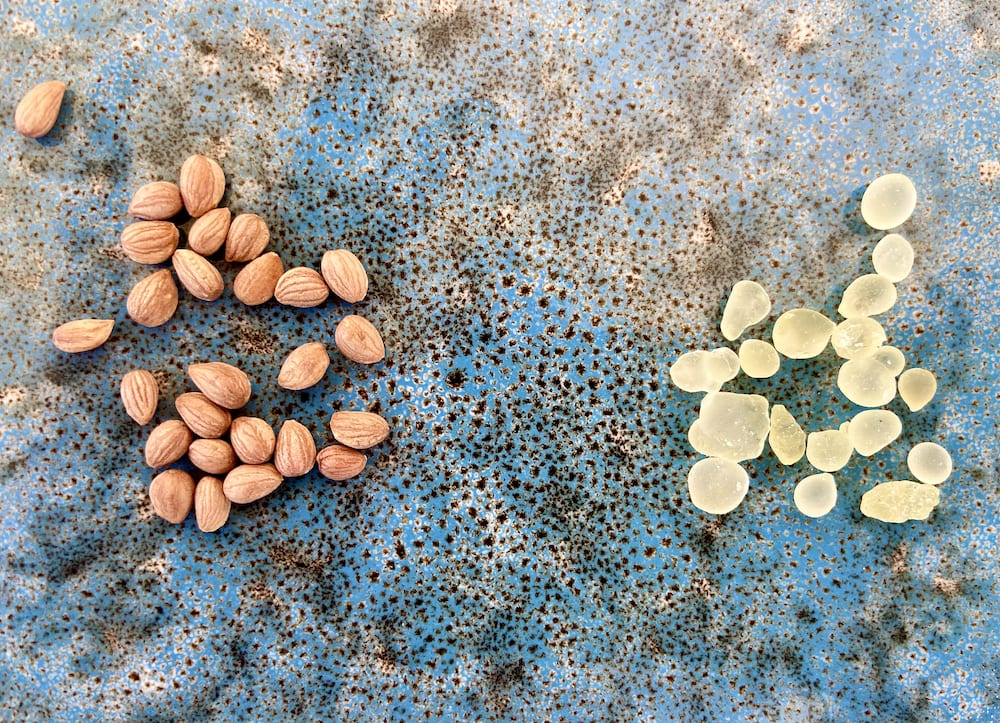
These are 2 spices that are necessary when making tsoureki.
Mastiha is basically resin from the mastiha trees and appears in drops (see photo). While these mastiha trees may grow in other areas in the Mediterranean and produce resin, only the Chios trees produce the mastiha “tears” that have the characteristic aroma (a combination of pine and cedar), and health benefits. You can learn more about mastiha here >> Chios Mastiha: A very special Greek ingredient
- Substitute for Mastiha: The flavor is so unique that it if you don’t have mastiha, it is better to not replace it with something else.
You can find Mastiha here: Chios Mastiha Tears Gum Greek 100% Natural Mastic Packs From Mastic Growers (20gr Medium Tears)
Mahleb is an aromatic spice derived from the seeds of a type of cherry tree. Its flavor has hints of bitter almond and cherry.
- Substitute for Mahleb: Recommendations include almond extract with a touch of star anise or another combo of fennel seed and cardamon.
You can find Mahleb here: Cerez Pazari Ground Mahlab 60gr- 2.1oz-Mahlepi -Mahaleb -Mahlep -Mahleb Medium Bottle
How to Make Tsoureki
I’m showing here the main steps with photos to get an idea of what your dough should look like. It would be ideal to weigh all the ingredients. I have provided both metric and imperial measurements.
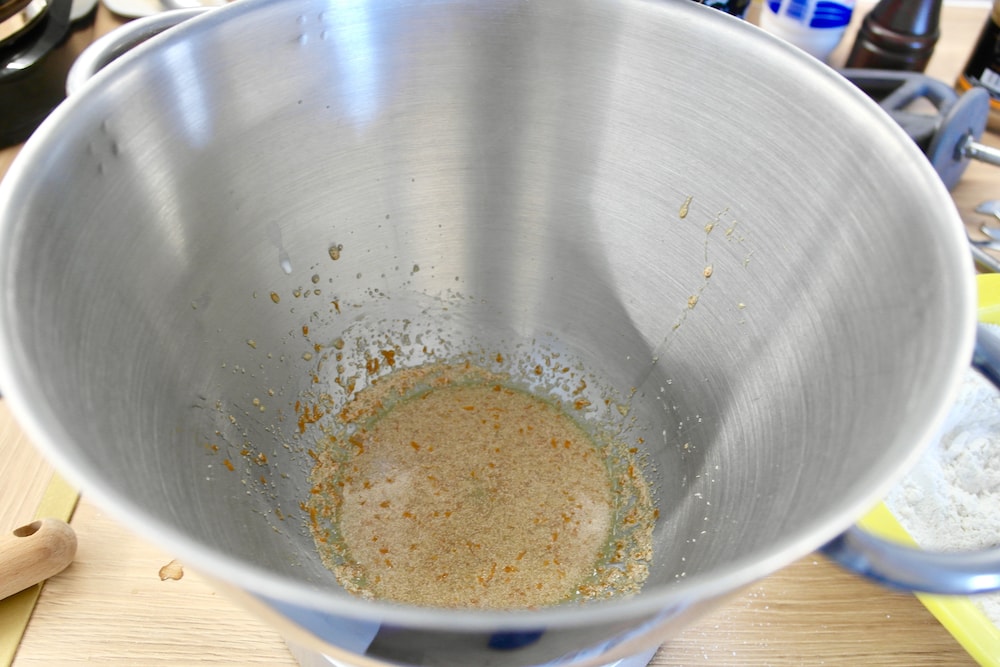
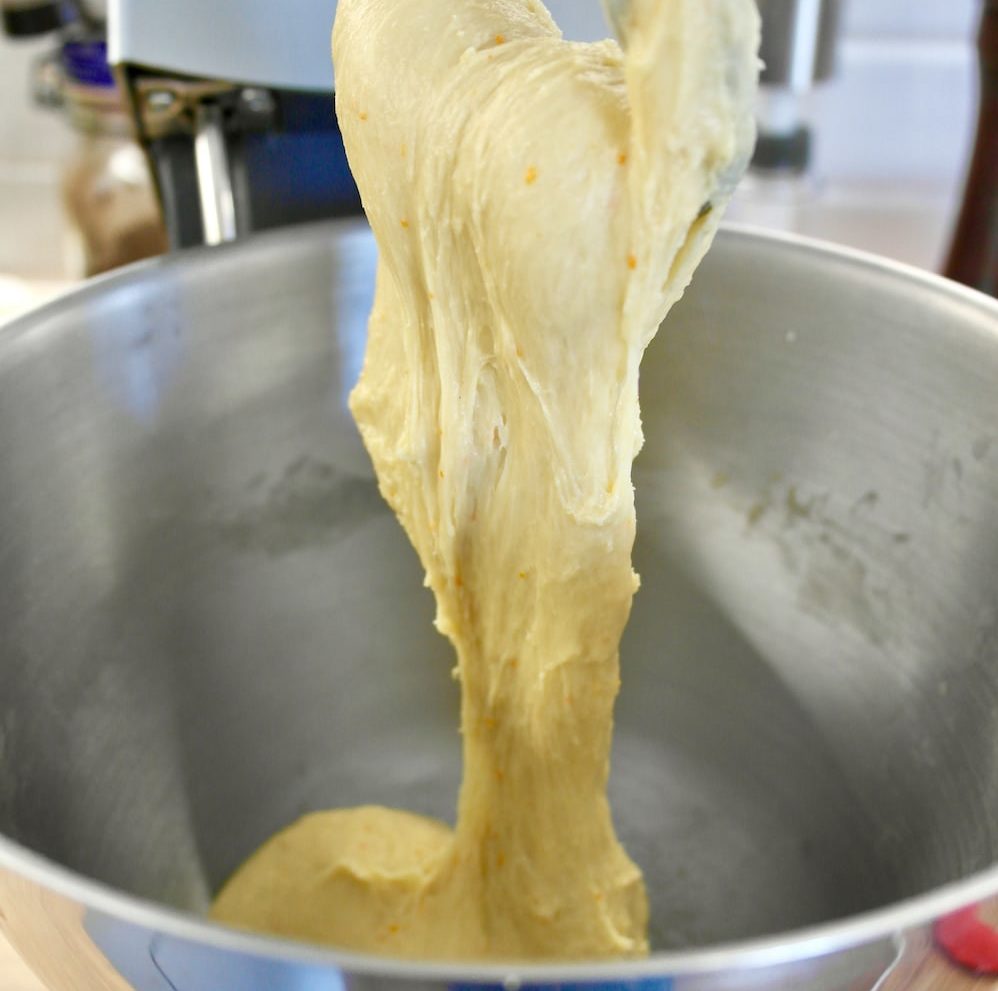
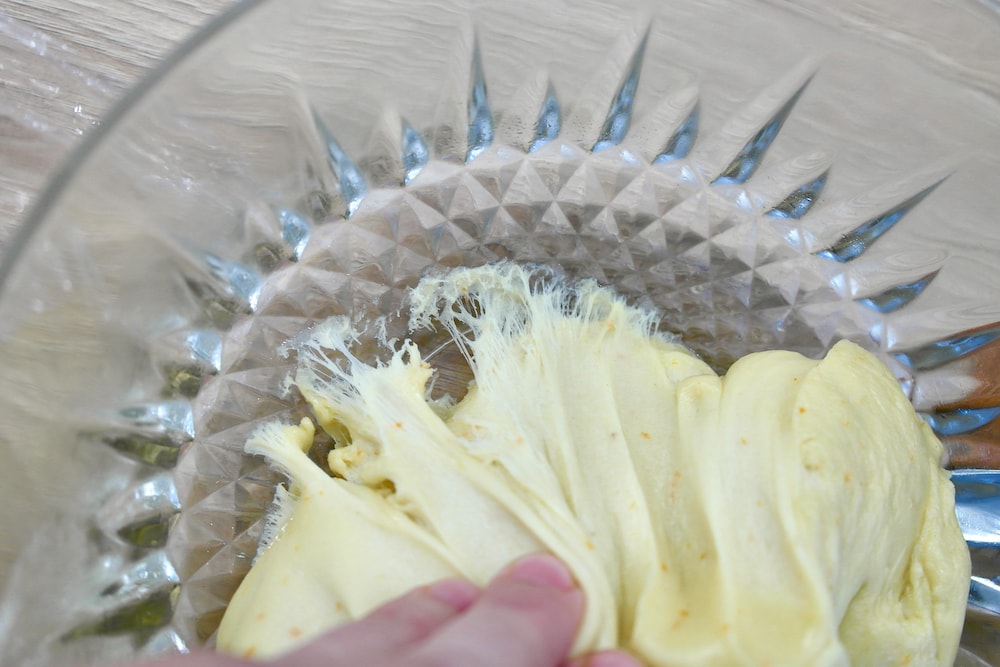
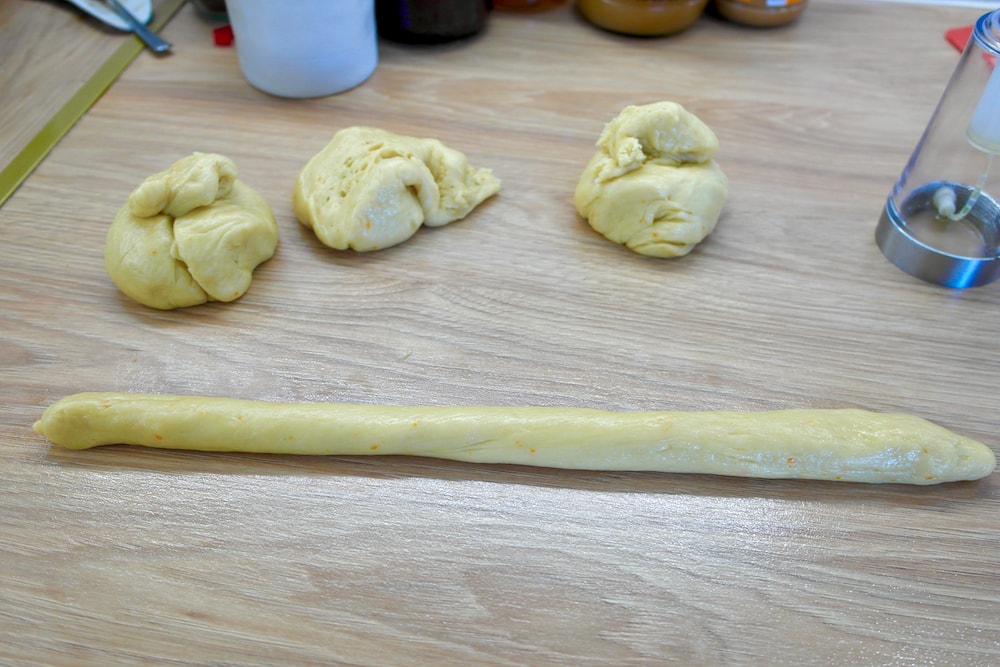
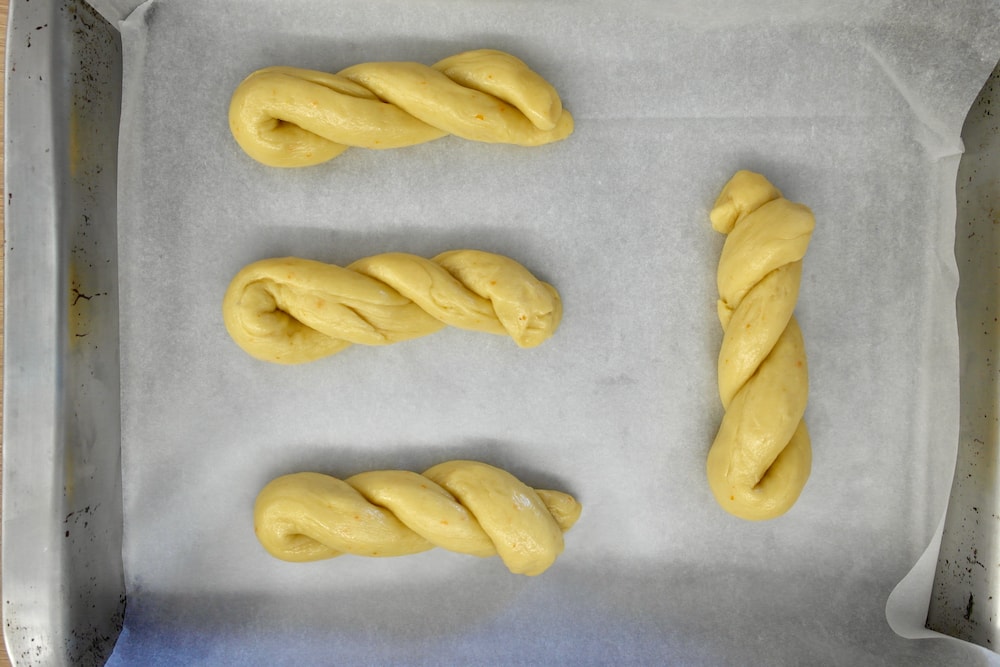
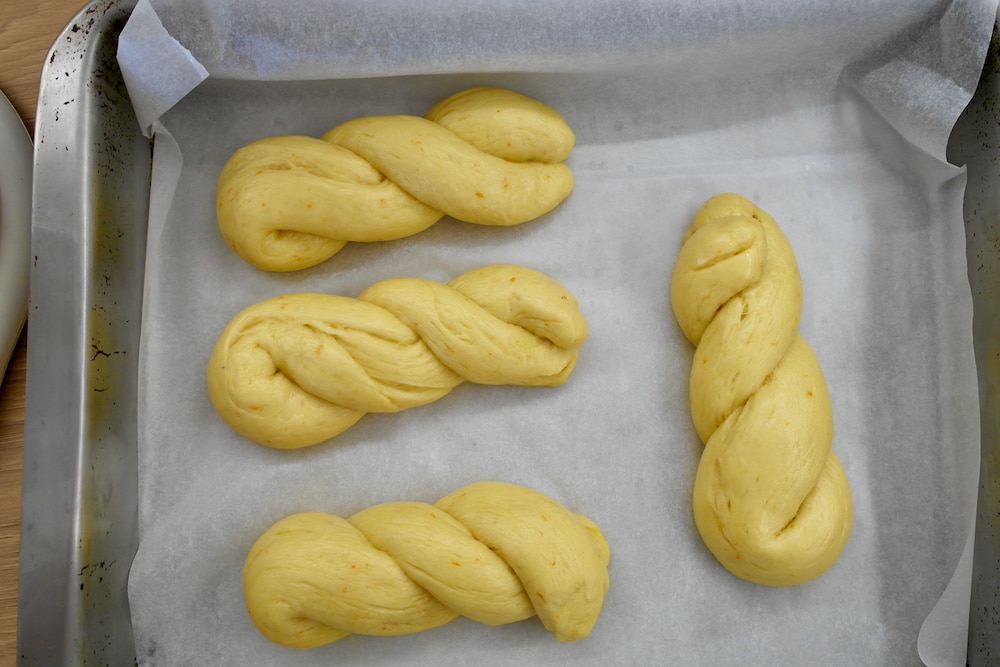
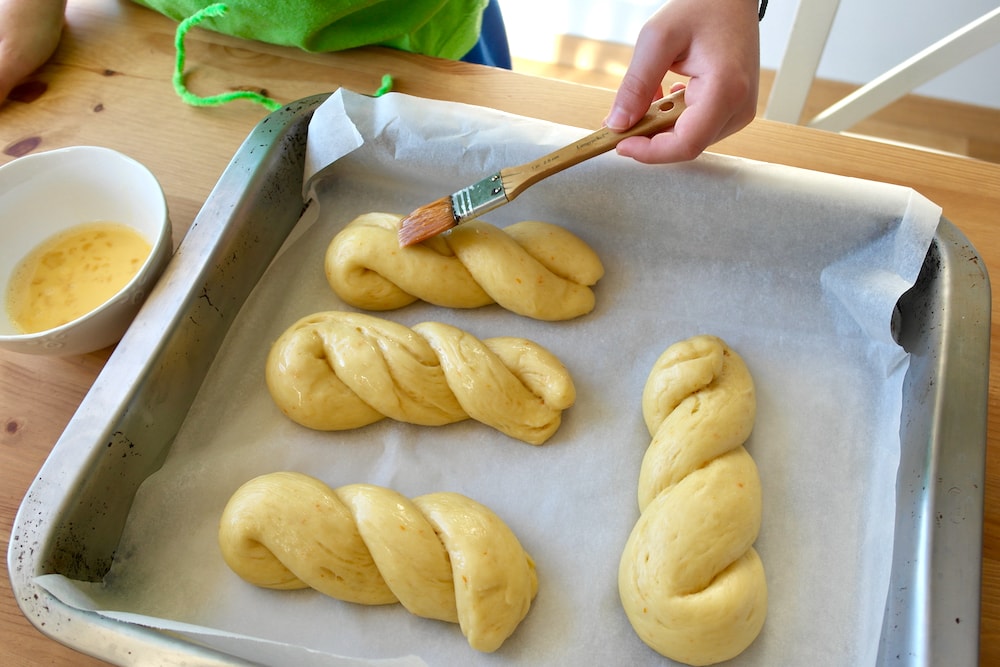
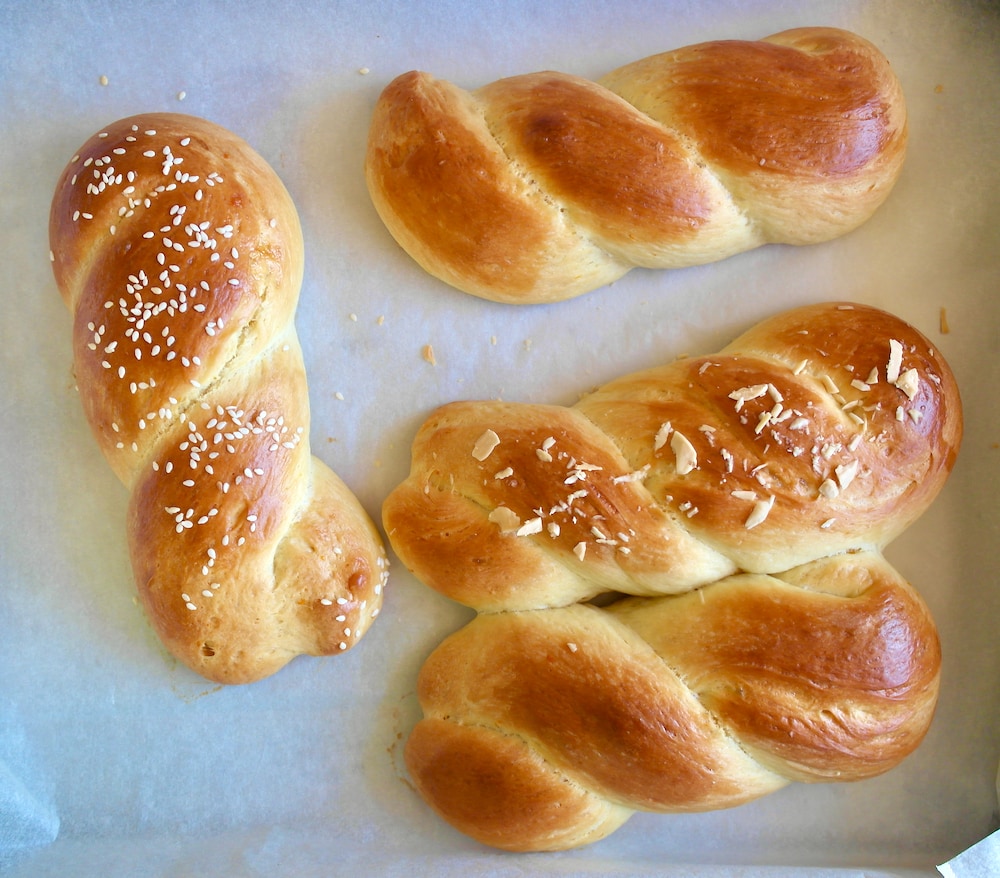
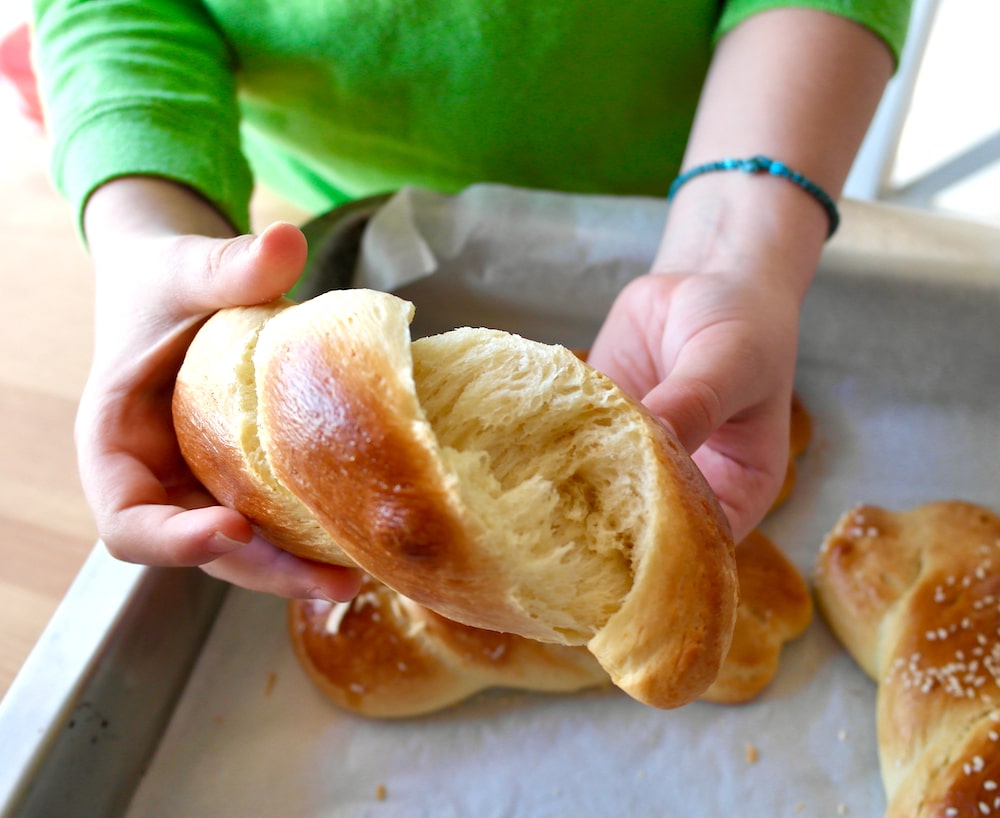
How to Eat Tsoureki
In my opinion there is nothing better than a piece of tsoureki with your morning coffee. You can also serve it with butter or jam or Nutella. And if you have a lot of leftovers, you can always make it into French toast.
How Long Does Tsoureki Last
Tsoureki can last 4-5 days. Wrap it in plastic wrap and place it in a ziplock bag in room temperature. You can also freeze it.
Tsoureki- Sweet Greek Easter Bread
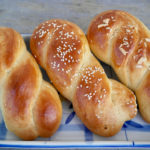
Ingredients
- 1 ½ tsp (4.5 g) dry yeast
- Orange zest from 1 orange
- 50 g (1.8 oz about 6 1/3 tbsp) granulated white sugar
- 60 ml (2 oz) milk warm (not hot)
- 1/8 tsp ground mastiha
- 1/8 tsp ground mahleb
- 250 g (8.8 oz or 2 cups) all-purpose flour
- 2 small eggs or one extra large
- 1/3 tsp fine salt
- 75 g (2.6 oz) butter cold and cubed
For the egg wash
- 1 small egg
- 1 tsp sugar
- 2 tbsp water
To sprinkle
- Slivered almonds and or sesame for sprinkling
Instructions
- Line a baking sheet with parchment paper.
- In the mixer bowl add half of the sugar, the dry yeast, orange zest and warm milk. Mix by hand with a whisk and set aside for 10 minutes so that the yeast will be activated.
- In a food processor add the other half of the sugar, the mahleb and mastiha and process until all combined. If you are not using ground mahleb and mastiha crush them first with a mortar and pestle.
- In a separate bowl mix the flour with the sugar/spices mixture and add to the yeast mixture. Mix with the hook for a couple of minutes on medium to high.
- Add the eggs and continue mixing with the hook, lower the speed and add the salt and butter pieces. Increase the speed and knead for 10-15 minutes or until dough is stretchy and stringy. It will be soft and unstick from the bowl. Do not add additional flour. Add some olive oil to your fingers if dough is sticking a bit to your hands.
- In a lightly greased bowl, place the dough and cover with plastic wrap. Let it sit in a warm place for 1 ½ hour.
- Remove the dough from the bowl and separate it in 4 equal pieces (weigh them if necessary). Add some olive oil to your fingers if dough is sticking a bit to your hands. Roll out each piece in a cord about 13 inches long, fold in half to twist into a large braid. Place on the prepared baking sheet. Do this with the rest of the pieces.
- Cover the pan with plastic wrap and place the pan in a warm place for about 2 hours.
- Preheat oven at 340 F (170 C)
- In a small bowl, mix 1 egg, 1 tsp sugar and 2 tablespoons water. Brush the mixture over each tsoureki. Sprinkle with slivered almonds or sesame seeds.
- Bake for about 20 -30 minutes until the tsoureki is golden-brown.
- Remove from oven, let it sit for 10 minutes. Serve warm or at room temperature.
PIN IT AND SAVE IT FOR LATER!


I bought your book because it sounded more authentic to the Mediterranean WOE but in this recipe you have butter instead of olive oil and plain flour instead of whole grain. Did you change values?
Hi Sandra! The Mediterranean diet is based on a real life way of eating, so as noted in the recipe this was a celebratory food, where the used ingredients that were “luxury” or special occasion ingredients such as butter and white flour, they did not make this or eat it regularly, just for holidays and celebrations. In fact, traditionally they were abstaining from animal products over 200 days a year due to religious fasts, and these celebratory recipes were made when the fasts ended.
Any substitutions for the spices or options to try? Have never seen these locally and not on Amazon either. Thoughts? Ideas? Cinnamon, nutmeg, cardamom, cloves, etc? Hard to sub when I don’t know how it’s supposed to taste. Thank you for this recipe.
Can you leave the dough overnight
Amazon has both mahleb and mastic. It’s a little expensive, but so worth it. You can freeze the mahleb for next year as I do. Not sure about the mastiha.
Hi Elena! With this recipe how many pieses fo I get?
Can I double the recipe? Thank you
Kathrine it looks like she got 3 at that size but if you want to do smaller you can. I make Callah all the time
This turned out wonderful! I’m not the best baker so I was pleasantly surprised! Thank you Elena
Thank you for the recipe, although I could not yet the yeast to activate with the 25g of sugar. It worked with the teaspoon. Can you advise why?
Also Can the recipe be doubled and still work?
Yes, you can double the recipe Vicki. I’m not sure why it did not activate. Make sure the temperature of the milk is not too high, it should be warm.
Thanks for a tsoureki recipe that doesn’t involve 10 or 12 cups of flour, and make a loaf that covers half a stremma! I don’t run a restaurant, and in these times of Covid, won’t be having 30 guests forEaster, so your recipe looks like the perfect size. Excited to try it.
Ha ha , yes, exactly!
Is it ok to use only mahleb? I don’t have any mastiha.
Yes, using only mahleb is fine.
I made them! they turned out beautiful! I had never made this before but they came out just like yours. I’ll be making a second for tomorrow.
Instant yeast does not need to be dissolved in a warm liquid. That’s why it’s called instant. It is smaller granules so you just toss it in with the flour.
Correct, I used plain dry yeast not instant yeast, corrected in the ingredients.
I am Celiac. I have GF recipes for cinnamon buns, white bread, Challah and brioche. Would adding the spices from this recipe to one of those provide a similar result? I haven’t yet mastered just replacing a general all purpose GF flour for a gluten bread recipe as GF bread is extremely challenging to make. I used to make regular bread pre diagnosis so I have the skills if the recipe works. I am missing the foods my great Greek aunties used to make and would love to make this as well. Thanks!
I believe so Barb. It should work.